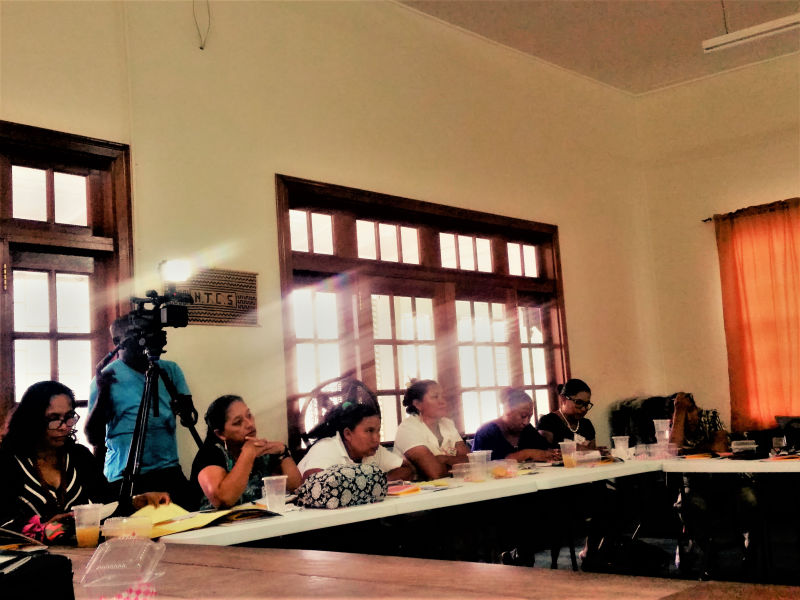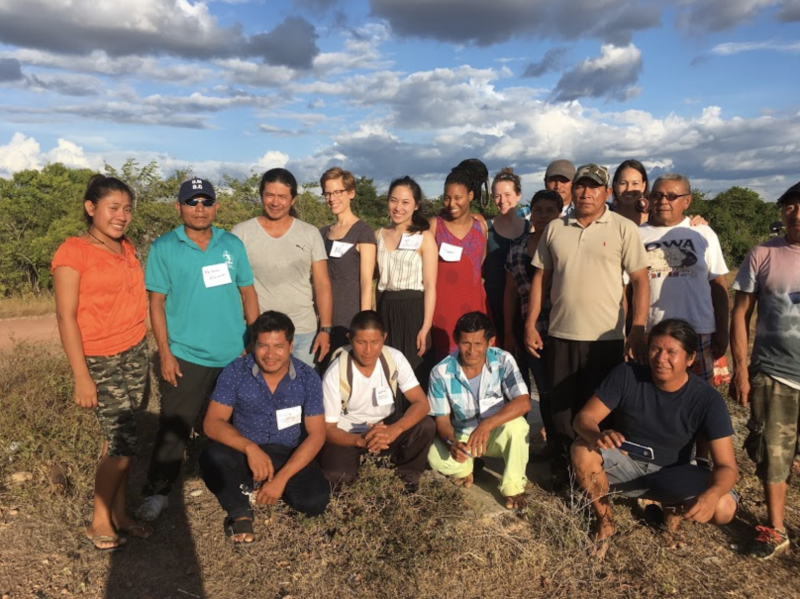Indigenous women leaders attended a workshop in Georgetown
On May 23 and 24, 2019 Indigenous women leaders attended a workshop in Georgetown. This workshop was sponsored by UNESCO in association with the Women andGender Equality Commission and Forest Carbon Partnership Facility. Topics were based on ; Gender; Women’s Rights and Access to Justice. The first day workshop was facilitated by Ms. Ann-Marie Williams – CARICOM Deputy Program Manager for Gender and Development who spoke on Gender and Equality; Gender and Development; and Gender and Culture.
The second day was facilitated by Ms. Vanda Radzik, REDD+ Consultant and Women and Gender Equality Specialist. Ms. Vanda Radzik spoke on REDD+ Rights, Roles and participation of Indigenous Women and the Climate Agreement and Sustainable goals (SDG) Goal 5 and Goal 13. The afternoon session was facilitated by Danuta Radzik from Help Shelter who went through the simplified version of The Sexual Offence Act; and Karen de Souza form Red Thread who spoke on The household guide to the Domestic Violence Act.

(Fourth from left) Councillor Goretti Lewis of Shulinab Village, also the Assistant Secretary/ Treasurer of the SRDC makes a request for this kind of workshops to be extended into other Indigenous communities.

SRDC Launches Water Monitoring Pilot to Protect the Wapichanao Right to Water:The Global Justice Clinic and Water Scientist Lend Support to Crucial New Effort.
From March 26-29, the South Rupununi District Council (SRDC) hosted a four-day water monitoring workshop which was co-facilitated by the Global Justice Clinic of NYU School of Law and Dr Beth Hoagland in Aishalton Village, Guyana. Since 2013, the SRDC has been monitoring violations of their land rights – particularly environmental degradation and illegal mining. This workshop launched the SRDC’s water monitoring pilot as an extension of the SRDC’s existing monitoring program to include monitoring the adverse impacts of mining on Wapichan territory.
The workshop served as a knowledge exchange between participants with complementary expertise. Wapichan, Kapong (Akawaio) and Pemon (Arecuna) monitors from the South Rupununi (Region 9) and the Upper Mazaruni (Region 7) shared extensive cultural and intergenerational knowledge of their environment. Monitors also shared their goals for water monitoring, their insights from years of experience participating in the SRDC’s and the Upper Mazaruni District Council’s (UMDC) existing monitoring programs, and their first-hand knowledge of the destructive impacts of mining. They applied this knowledge to prepare a detailed map of proposed water monitoring sites which will inform comprehensive water monitoring plans in their respective regions. In addition, monitors applied lessons from other countries, including Guinea, El Salvador and Haiti to generate advocacy ideas using the data collected from the water monitoring program.
Dr Hoagland, a water expert from the Colorado School of Mines, shared lessons in hydrology –the scientific study of water. This included the principles of water monitoring, water sources and the impacts of mining. In addition, Dr Hoagland demonstrated the use of field-based water monitoring equipment and the process for collecting water samples for lab testing of dissolved metals, including mercury. Professor Meg Satterthwaite, Professor of Clinical Law at New York University together with her Global Justice Clinic team of human rights lawyers and law students, shared lessons on human rights, legal empowerment and advocacy. This encompassed the legal framework behind water monitoring, including international laws that protect the rights of indigenous peoples and human rights such as the rights to water and a healthy environment, as well as Guyanese laws that regulate mining. Participants discussed the legal justifications behind a custom-made questionnaire to capture water monitoring data, and how that data can be analysed and converted into meaningful reports by the SRDC and UMDC for legal empowerment and advocacy purposes.
Having participated in the workshop, a SRDC Monitor said:
“Since I was 11 years old, I’ve been visiting Marudi Mountain and Mazao Mountain which are sacred sites for us–the Wapichan People. Over the past 31 years, I’ve been watching mining grow around Marudi and Mazoa and the resulting deforestation, excavation of water ways, disruption of the natural water flow off these mountains, and the pollution of water sources that our people depend on to live.
We know about the importance of protecting our lands and our waters because this is impressed upon us by our fore-parents. I have also learned about the environment through interactions with indigenous communities and because of my connection to nature itself. This means that for a long time, I’ve been able to look at water and know from my observations and experience whether it is contaminated. However, learning about scientific principles allows me to explain changes in water quality that I have long observed but never been able to explain in scientific terms. In addition, while I have been collecting data on the environmental harm than mining is causing for the past six years, I now have a better appreciation for the importance of collecting reliable and accurate data as evidence to protect our lands and resources. Learning about the international and Guyanese laws that protect our rights strengthens our ability to use this data as information to influence both the miners who are causing harm, and also the government authorities and decision makers who have an obligation to regulate mining and protect our environment, but are presently falling short of their responsibilities.
In the past, the water around our community was safe to use and drink but this was before miners contaminated our water sources. For years, the destruction that mining causes to Wapichan territory has been dismissed by miners and government authorities. This has to stop and I will use what I have learned to support the SRDC protect and defend our lands and waters from mining and other destructive activities.
Applying the knowledge that I deepened during the water monitoring workshop, I have been reflecting upon why my fore-parents may have defined Marudi, Mazao and the entire Karawaimintau mountain range as sacred sites. I find myself wondering whether their cultural significance is centred around their importance as watersheds, because this is what allows the mountains to sustain life in the broadest sense – not only the life of our peoples, but also the life of plants, trees, wildlife and the spiritual beings”.
A key takeaway from the water monitoring workshop was a lesson imparted by the Wapichan, Kapong (Akawaio) and Pemon (Arecuna) peoples: that each of us are only one small part of an entire ecosystem, and all our actions have consequences that will impact future generations.